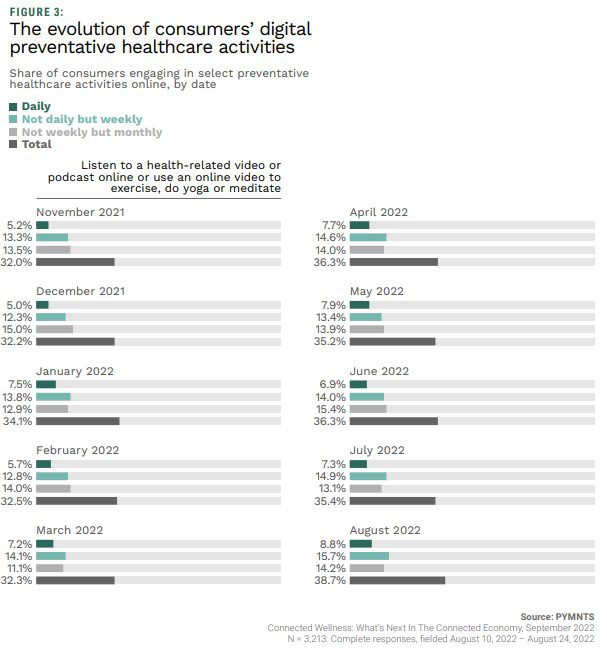57% of US Consumers Sought Preventative Healthcare Online

We’re taking better care of ourselves — good news for physical, mental and financial health. The preventative care movement is also part of the connected economy of devices and data, and as such holds manifold benefits for the post-COVID consumer-patient.
We analyzed this in the study “Connected Wellness: What’s Next In The Connected Economy,” a collaboration with CareCredit, for which PYMNTS surveyed over 3,200 consumers to gain a clearer understanding of tech trends enabling the preventative care boom.
In terms of marquee findings, we learned that “148 million consumers of all ages, incomes and educational backgrounds engaged in some type of preventative healthcare activity, whether it was using a guided meditation app or tracking vitals on a fitness tracker,” per the study.
From health apps like guided meditation and cognitive behavioral therapy-inspired mood boosters, consumers are proactively managing health issues via digital means.
Get Your Copy: Connected Wellness: What’s Next In The Connected Economy

As might be expected, millennials and Gen Z consumers are leading the pack when it comes to preventative care, with their numbers steadily rising since November 2021, when 53% engaged in some type of preventative healthcare activity.
In the intervening months, that number had risen to 57% of consumers engaging in some type of preventative healthcare activity online in August.
“Wearables such as Apple Watches and smart rings, which can be used to track and store vitals and activity information, are integrated-tech consumers’ chief mode of preventative healthcare, with 87% using at least one wearable technology that month. Integrated tech consumers use mental healthcare apps the least, but 75% of them still report using at least one in August.” That’s compared to November 2021 when 75% of connected consumers used wearables, and only 45% reported use of mental health-related apps.
See it Now: Connected Wellness: What’s Next In The Connected Economy
